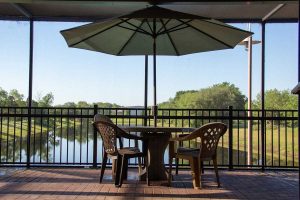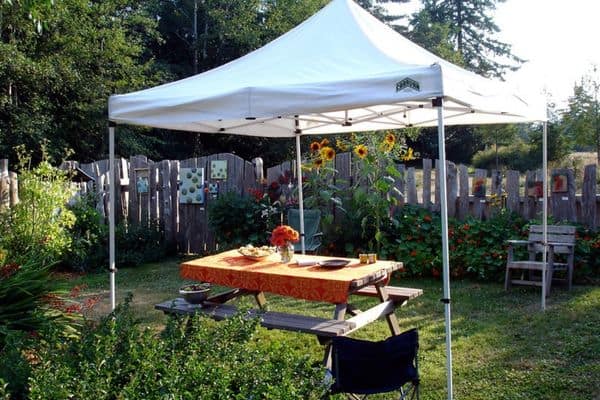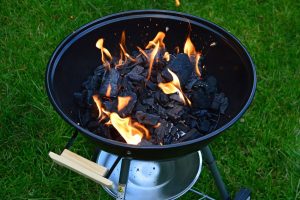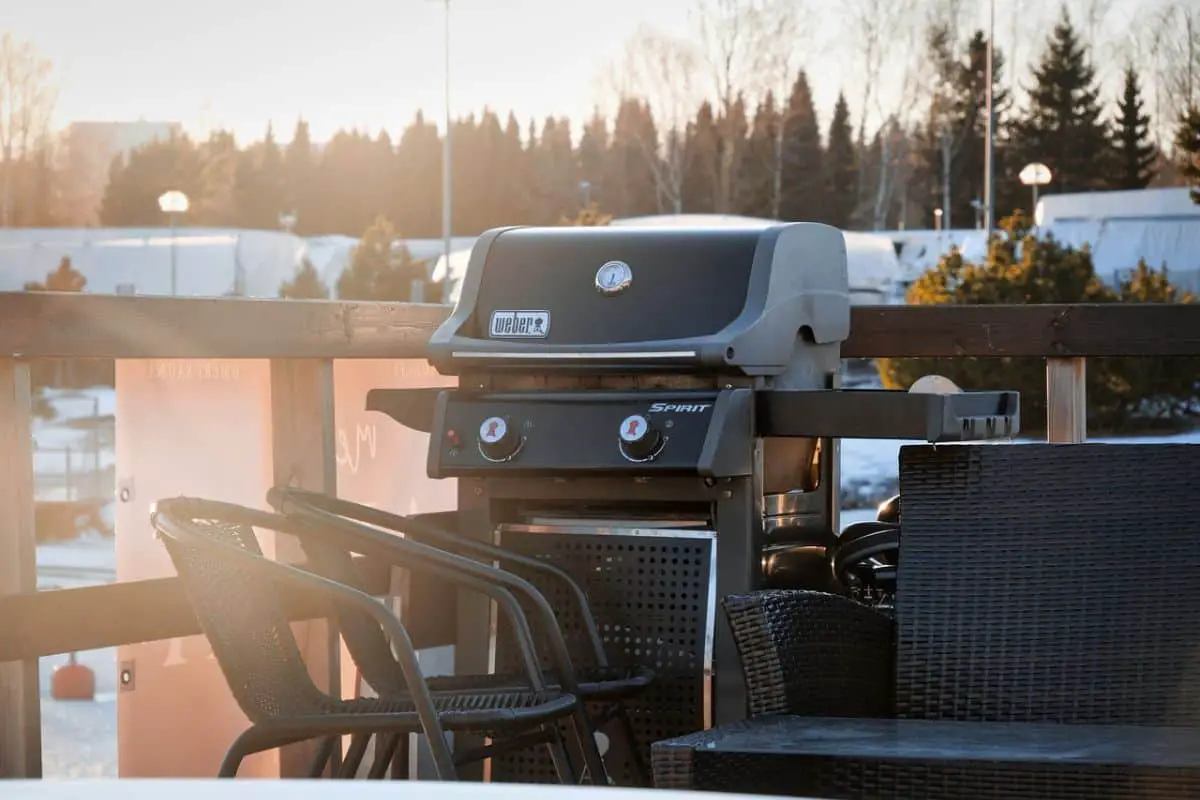This page may contain affiliate links. If you click and buy, we might get a small commission at no cost to you.
Grilling creates amazing meals by infusing flavors and pairs well with outdoor activities. Covered patios are also a great way to enjoy your outdoor space while being protected from the elements. But do the two mix?
If you are wondering can you use a gas grill under a covered patio, it’s important to know the details beforehand to avoid issues. Find out the answers to this question and more about where you can grill.
Can you use a gas grill under a covered patio?

Generally, it’s best not to grill under a covered patio as it can be damaging to your patio ceiling or even dangerous. However, there are some exceptions. For example, most gas grills or pellet grills don’t produce excess smoke like charcoal grills.
Before you consider grilling under a covered patio, you need to make sure your patio has plenty of ventilation. This means it isn’t screened-in and has no ceilings or very high ceilings (at least 10 feet). Even with a high ceiling, if the smoke reaches the walls or ceiling, it can cause smoke stains.
This can also cause your patio to smell like smoke for a while. It’s also best to grill facing the side where the air is hitting the grill to vent more smoke produced. If you have a patio made from flammable material, such as wood, you can add a vent hood to your grill to increase ventilation.
There are steps you can take to make grilling under a covered patio less risky, but grilling out in the open away from structures is always going to be best.
What are the risks of grilling under a covered patio?
Of course, the biggest risk of grilling under a covered patio is fire. This is especially a concern with charcoal grills since they burn very hot and cause embers.
If the embers touch any flammable material, a fire can occur. Excess smoke inhalation is also a major risk that can cause health issues from carbon monoxide in the smoke.
Another risk is smoke and grease stains that can be very hard to clean off your patio structure. Make sure your gas grill doesn’t have grease build-up and is cleaned properly.
Also, when using a gas grill, you must keep the lid open when lighting it. If you close the lid, the gas will pool and can explode or cause enough ignition that a fire hazard is more likely.
Can you use a gas grill under a canopy?

It’s not safe to grill under a canopy because of the type of material. Plastic fibers like polyester, polyethylene, and vinyl can melt when they come in contact with a strong heat source. The melting canopy can fall onto you or start a fire when it touches a flammable surface.
The last thing you want is for your canopy tent to go down in flames and spread. Even if the canopy doesn’t come down in flames, the embers from your grill can cause damage. If an ember from the grill touches the canopy it can cause a hole in your tent and isn’t fixable.
Where should I put my gas grill in my backyard?

If you plan to have a built-in gas grill for your home, you have to take in some safety considerations. Many builders suggest having the grill at least 10 feet away from any structure, including flammable overhangs. This same distance is recommended for moveable gas grills when in use.
Most manufacturers will also provide guidance on the proper clearance of combustibles. This typically includes 20 inches to the grill’s rear, 7 inches from the sides, and 24 inches if the grill is near the vinyl siding. Examples of combustibles include:
- Outdoor furniture
- Posts
- Trees
- Bushes
- Ground-level plants
Is it safe to grill under trees?
No, it isn’t. As previously mentioned, trees are combustible. It is best to grill at least 10 feet away from large plants.
Any embers that come off your grill can spark overhanging branches or leaves to ignite. This is especially a concern on windy days. The same goes for grilling under a tree with dying, dead, or weakened limbs that can easily break.
Grilling under the tree also causes damage to your tree, with the rising heat scorching the leaves or bark.
Can you put a gas grill on the grass?
You shouldn’t use your grill on the grass. The last thing you want is an ember dropping down onto the grass and causing a fire, especially if your grass is dry, allowing the fire to spread easily.
Instead, you want a stable, flat, and firm surface to place your grill. You can even use a large piece of plywood as a base over the grass to position your grill.
Conclusion
While you could get away with using a gas grill under a covered patio that has very high ceilings, there are risks you need to consider. Make sure you use your grill properly, there is plenty of ventilation, and consider adding a vent hood to reduce smoke stains.

If you don’t want to take the risks, the recommended distance your grill should be away from structures and combustibles is at least 10 feet. Happy grilling!



